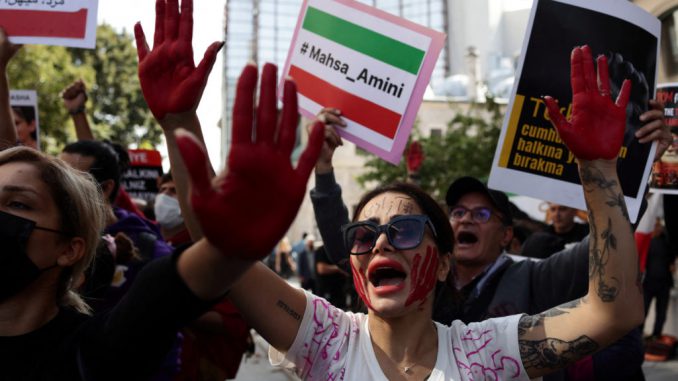
by Gabriela Carranza, Staff Writer

As the outrage for women across Iran sparked by the death of Mahsa Amini in September of last year, Iranian women have suffered enough. Despite all the pain, as early as March 2nd, we have gotten an escalation of reports of poison attacks on school girls in Iran.
In recent months starting in November 2022, the Iranian medical facilities have noticed a rise of primarily young girls being hospitalized for common symptoms. Symptoms vary from respiratory distress to fatigue, nausea, and dizziness. These unexpected illnesses have ambulances taking girls all over Iran with oxygen masks to hospitals because they are unable to breathe.
In the past three months, as the poison attacks have risen throughout Iran, attacking and injuring over 1,000 Iranian women, suspicions have begun to point fingers at the government. Since the death of Mahsa Amini, attacks against the government and morality police have been non-stop. Protests about inequality and violence against women have been sparked all over the world since Amini’s death.
The peaceful protest that has been held against the government have been met with more violence and several fatalities along the way. Most women have been killed during protests because they had rebelled against the rules of Iran and taken off their headscarves. In return for the anti-government protests, they also tore up pictures of their Supreme Leader, Ayatollah Ali Khamenei, and wished for his death.
The Iranian authorities have opened an investigation and have confirmed that the poisoning may be criminal and premeditated. Although the Iranian authorities have known about the poisonings since they started, they have failed to address the attacks for months.
The country’s health minister has deemed the attacks as “mild poison,” and some are led to believe the reason for these attacks has been targeted by Islamic extremist groups working in Iran to support a ban on education for girls and women.
During a cabinet meeting in the capital of Tehran, the president of Iran, Ebrahim Raisi, had instructed the ministries to find the cause of the poisonings “as quickly as possible.” However, he was led to believe that the common symptoms these women and girls have are similar symptoms that one can experience when dealing with stress and anxiety. He deems that the correlation of exams is the cause of these common symptoms and accused international media outlets of “taking advantage” of the situation to cause harm to the public.
Although these poisoning attacks require more attention and urgency from the Iranian government, what requires even more urgency is the growing attacks on women and girls in Iran. As well as ensuring that their rights are appropriately protected because the trends of violence against women cannot be tolerated by women and girls anymore. Families of the women and children are fighting for answers and fighting the government for the answers they deserve.
The peaceful protesting and the non-stop fight for the rights of women will not stop until the violence ends for women around Iran. Until the ever-growing attacks on women are put to an end, the hope will remain for women in Iran that the violence will rest.
